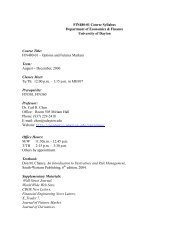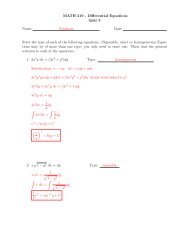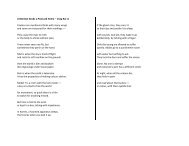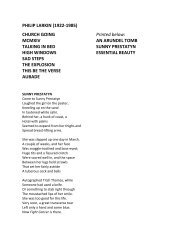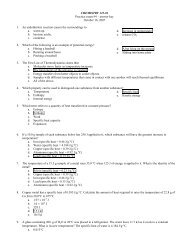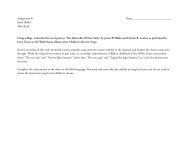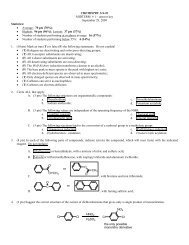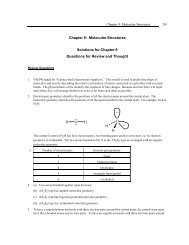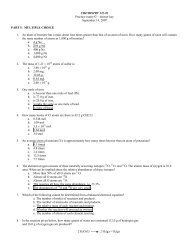Chap 26
Chap 26
Chap 26
You also want an ePaper? Increase the reach of your titles
YUMPU automatically turns print PDFs into web optimized ePapers that Google loves.
218 CHAPTER 10<br />
2. Table 10.1 illustrates how a unit of<br />
account simplifies price<br />
comparisons.<br />
D. Store of Value<br />
As a store of value, money can be held for<br />
a time and later exchanged for goods and<br />
services.<br />
E. Money in the United States Today<br />
1. Money in the United States consists<br />
of bills and coins—called<br />
currency—and deposits at banks<br />
and other depository institutions.<br />
2. The two main official measures of money in the United States are M1 and M2.<br />
3. M1 consists of currency outside of banks, traveler’s checks, and checking deposits owned by<br />
individuals and businesses.<br />
4. M2 consists of M1 plus time deposits, savings deposits, and money market mutual funds<br />
and other deposits.<br />
5. Figure 10.1 graphically illustrates<br />
the composition of these two<br />
measures in 2003 and shows the<br />
relative magnitudes of the<br />
components of money.<br />
6. The items in M1 clearly meet the<br />
definition of money; the items in<br />
M2 do not do so quite so clearly<br />
but still are quite liquid. Liquidity<br />
is the property of being instantly<br />
convertible into a means of<br />
payment with little loss in value.<br />
7. Checkable deposits are money, but<br />
checks are not; checks merely are<br />
the means by which the money is<br />
transferred among people.<br />
8. Credit cards are not money. Credit<br />
cards enable the holder to obtain a<br />
loan quickly, but ultimately the<br />
loan must be repaid with money.<br />
II. Depository Institutions<br />
A. A depository institution is a firm that takes deposits from households and firms and makes<br />
loans to other households and firms. The deposits of three types of depository institution make<br />
up the nation’s money:<br />
1. Commercial banks<br />
2. Thrift institutions<br />
3. Money market mutual funds




